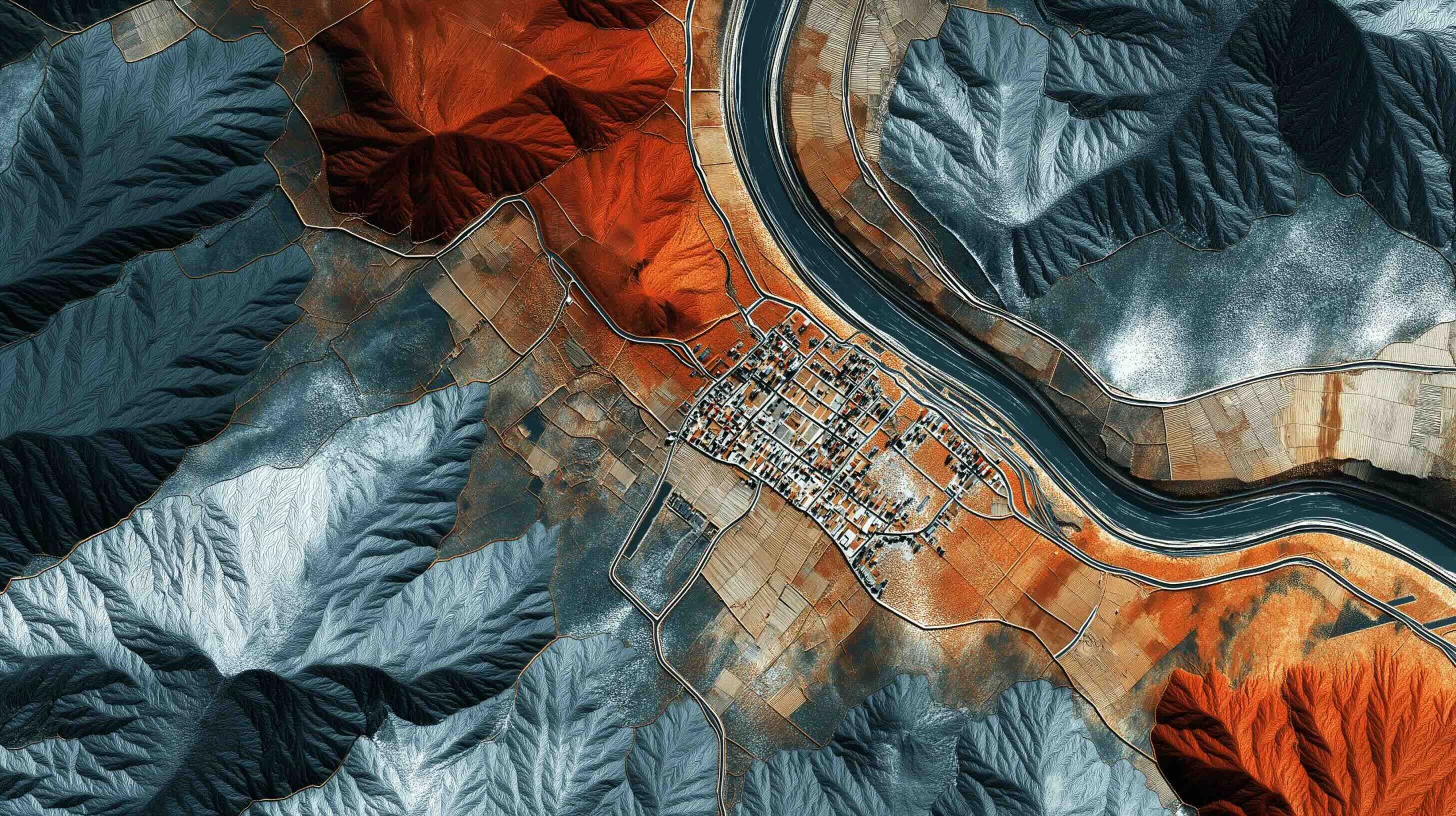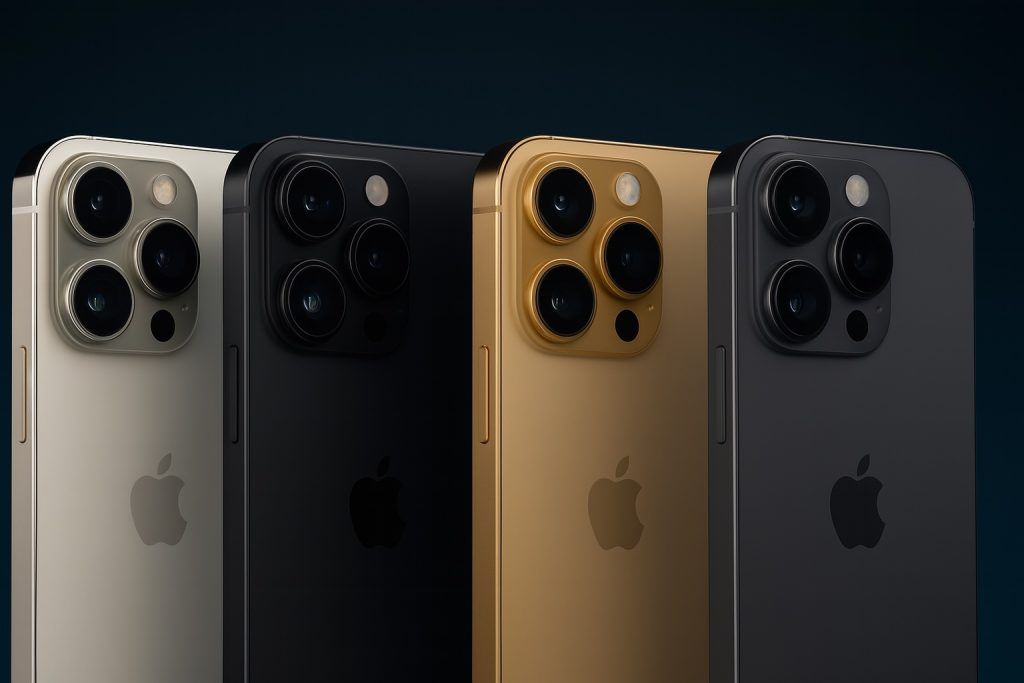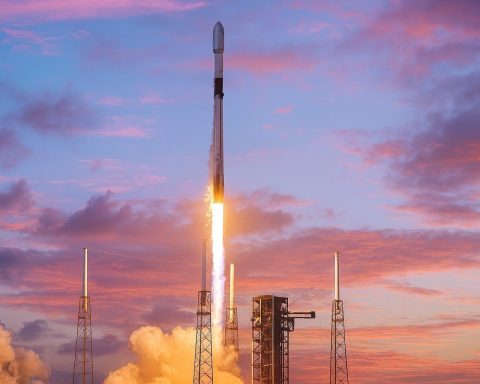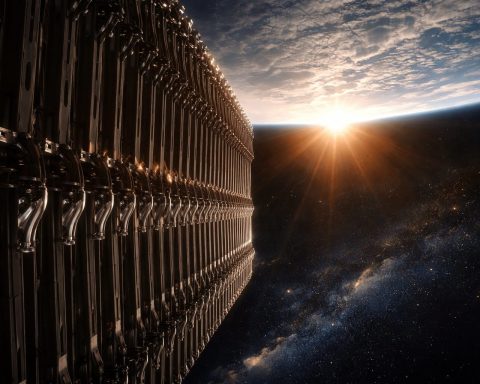- Google Earth was downloaded over one billion times in its first six years.
- Google Earth’s Time Machine covers 1984 to 2022 in a 4D interactive map built from millions of satellite photos.
- The Landsat program began in 1972 and offers a 50+ year global land-surface data record, with Landsat 8 and 9 providing 30-meter resolution imagery.
- Sentinel-2A and 2B image the entire Earth’s land every 5 days at 10-meter resolution (20 meters for some infrared bands).
- Maxar’s WorldView-3 and WorldView-4 offer 30-centimeter imagery, and the upcoming WorldView Legion aims for up to 15 revisits per day at 30 cm.
- Planet Labs operates hundreds of Doves (PlanetScope) that image the Earth’s land area daily, totaling about 350 million square kilometers per day as of 2023, with 3–5 meter resolution, and SkySat provides 50 cm imagery.
- Radar satellites such as RADARSAT-2, TerraSAR-X, and Sentinel-1 see through clouds and at night, with about 10-meter resolution.
- VIIRS on NOAA satellites produces ‘Earth at Night’ images, the Black Marble, showing city lights and aiding studies of light pollution.
- SpaceX’s Starlink had launched over 5,000 satellites by 2025, offers global coverage in more than 60 countries, and typically delivers latencies under 30 milliseconds.
- The iPhone 14 introduced emergency SOS via satellite, while Garmin inReach devices enable satellite messaging and distress signals.
Introduction: Satellites Above Us Everyday
Satellites have quietly become the unsung heroes of modern life. They play an essential role in our everyday lives, contributing to our well-being and helping meet important needs on Earth [1]. From providing the satellite maps we browse on our phones to enabling the GPS navigation in our cars, satellites are deeply integrated into daily activities. In fact, experts note that space-based satellite equipment is critically important for daily life on Earth, powering everything from real-time communications and banking networks to navigation, weather forecasting, and even internet access for remote areas [2]. “When we’re talking about space and what we get from it, it’s really all about communication and data… deeply integrated in almost everything that we do, whether we see the connections or not,” says Jessica West, a senior researcher in space security [3]. Indeed, there are thousands of satellites in space today, serving a wide range of purposes – and their impact is absolutely everywhere.
Despite being hundreds or thousands of kilometers above us, satellites make it possible to zoom into any corner of the Earth. Want to see your neighborhood from above? Or check the live satellite weather over the Caribbean before a trip? Curious about yesterday’s hurricane images from space? All of this is possible thanks to an extensive network of satellites and online tools. This in-depth report will demystify how satellites enable Google Maps satellite view, near real-time live Earth views, up-to-date weather satellite images, global communications like Starlink, and much more. We’ll explore the major types of satellite services available to the public, quote insights from experts in the field, and link to reliable sources. By the end, you’ll understand how to view Earth via satellite – from your own house’s rooftop to dynamic weather systems – and appreciate the remarkable technology orbiting above.
(Note: “Satellite” is sometimes misspelled as “satelite” or “satelit” in searches – but regardless of spelling, the following sections cover all you need to know.)
Satellite Maps and Live Views: Exploring Earth from Above
One of the most popular uses of satellites is mapping and imagery – basically, showing us what Earth looks like from space. Tools like Google Maps’ satellite view and Google Earth have brought detailed overhead imagery to anyone with an internet connection. In fact, Google Earth has been so widely used that it was downloaded over one billion times in its first six years [4]. These platforms stitch together images from many sources – including high-resolution satellite photos, aerial photography from airplanes or drones, and sometimes even kite or balloon imagery [5] – to create a seamless virtual globe. You can zoom from a global view all the way down to an aerial view of your house, seeing buildings, roads, and terrain in rich detail. The highest resolution areas (like major cities) have imagery so detailed that each pixel represents about 15 cm on the ground [6], although those ultra-fine views are usually from aircraft rather than satellites. Most satellite images in Google Earth are a bit lower resolution (often 50 cm to 10 m per pixel), but still clear enough to recognize neighborhoods, vehicles, and natural features.
It’s not just Google that offers this. There are many satellite viewer platforms and aerial maps available: Bing Maps (by Microsoft) has a Bing aerial view layer, Apple Maps offers a satellite mode, and Yandex Maps (a Russian service) and OpenStreetMap (open-source map community) also let you overlay satellite imagery. Even Wikimapia was created to let users annotate satellite maps collaboratively. Meanwhile, India’s ISRO has its own platform called Bhuvan, an Indian version of Google Earth, showcasing Indian satellite imagery for the subcontinent. These services prove that a global satellite view of Earth is accessible to the public like never before.
Historical and 3D Views: Not only can we see current imagery, but we can also travel back in time. Google Earth’s Time Machine feature (also known as Historical Imagery or Google Earth Timelapse) allows users to scroll through decades of satellite images for many locations. This Google tool presents “nearly four decades of planetary change from 1984 to 2022 — all thanks to a 4D interactive map made from millions of satellite photos,” letting anyone watch time unfold on Earth’s surface [7]. In other words, you can see cities expand, forests disappear or regrow, and coastlines shift over time – a powerful way to visualize change. For example, one can witness urban expansion around the world or observe glaciers shrinking year by year. Other organizations, like NASA and USGS with the Landsat program, have amassed an image archive spanning 50+ years, enabling such time lapses. The Landsat program (jointly run by NASA/USGS) is in fact the longest continuous Earth imaging effort; its “unmatched long-term data record provides the basis for a critical understanding of environmental and climate changes” over the last half-century [8].
“Can I get a live view of my house from a satellite?” is a common question. The notion of a “live satellite view of my house in real time” – like a video feed – is mostly a misconception. While satellites are incredibly advanced, they do not typically provide continuous live video of specific locations on demand. Most imaging satellites pass over a given area at most once a day (or even once every several days), capturing still images. So the images you see on Google Maps or other satellite maps live services are usually at least a few months to a few years old, not live streams. That said, there are some ways to get something close to real-time imagery. For instance, Zoom Earth is a popular website that displays near-real-time satellite images for the whole globe. It combines data from weather satellites and recent imaging passes to update visuals frequently. Zoom Earth’s live satellite imagery pulls from sources like NOAA’s GOES, Japan’s Himawari, and Europe’s Meteosat geostationary satellites, updating as frequently as every 10–15 minutes for global cloud imagery [9]. This means you can watch current cloud patterns, storms, and even wildfires almost as they happen. However, this “live” imagery is mostly for large-scale features (like weather); it won’t show minute-by-minute movement of people or cars on your street.
For a truly live view from space, one example is the International Space Station (ISS): it has an external HD camera that streams video of Earth as it orbits (~400 km up). Viewers on YouTube or NASA’s channel can see the planet rolling by beneath the ISS in real time, though of course it’s a distant view (you see the curvature of Earth, not individual houses). NASA also operates the DSCOVR satellite’s EPIC camera at 1.5 million km away, which “takes a new picture every two hours, revealing the planet’s ever-changing clouds and weather systems on the sunlit side” [10]. These aren’t zoomed into your backyard, but they are live-ish broad views of Earth. So while you can’t yet spy on your backyard in real time via satellite (thankfully for privacy!), you can certainly get latest satellite images of Earth and watch phenomena unfold from space.
Street View vs. Satellite View: It’s worth noting the difference between satellite imagery and services like Google’s Street View. Street View provides ground-level 360° photographs taken by special camera-equipped cars or trekkers, letting you virtually walk the streets. Many users search for “street view of my house” or “find my house on Google Earth street view”. Indeed, you can often see your home from the street-side perspective if Google’s cameras have covered your area. However, this is not from satellites at all – it’s captured on the ground. Satellite view, on the other hand, is the top-down image from orbit. Both are complementary: one gives you the context of the neighborhood layout from above, and the other shows what it looks like on the ground. Together, they satisfy our curiosity to explore virtually any address on Earth. Just remember, neither one is truly live. Street View images are typically a few years old, and satellite images range from months to a few years old depending on the location. Still, the ability to “find my house on Google Earth” and see it from both space and street is something unimaginable a few decades ago, highlighting how far satellite mapping has come.
Weather Satellites: Watching Earth’s Weather in Real Time
Every time you check the weather app and see a cloud satellite image or radar, you’re benefiting from an extensive network of weather satellites. These satellites act as our eyes in the sky for monitoring Earth’s atmosphere and oceans. They continuously track cloud movements, storm development, and even environmental factors like wildfires or dust storms. Meteorologists rely heavily on this space-based data. As one meteorologist explains, “Satellite data allows meteorologists to keep track of the location, structure and intensity of severe weather, helping to keep people safe.” [11] Without satellites, we’d be virtually blind to brewing hurricanes far out at sea or storm fronts in remote areas. In hurricane season especially, satellites are vital: for instance, when tropical storms form off the coast of Africa (far from any radar or weather stations), forecasters use satellite images to identify and monitor them [12]. This early detection has saved countless lives by giving warning of hurricanes and typhoons days before landfall.
Types of Weather Satellites: There are two main kinds. Geostationary weather satellites orbit around Earth’s equator at about 36,000 km high, moving at the same rotation speed as Earth, so they effectively hover over one spot. This lets them take continuous movies of cloud movements over a fixed region. Examples include the U.S. GOES-East and GOES-West satellites (which cover the Americas and Atlantic/Pacific oceans respectively), Europe’s Meteosat (covering Europe/Africa), Japan’s Himawari (covering Asia/Pacific), and India’s INSAT series (covering the Indian Ocean region). These deliver near-real-time imagery (often every 5–15 minutes) and are the sources of those looping satellite animations on news broadcasts. The second type, polar-orbiting satellites, fly much closer (~800 km altitude) and scan the entire globe in strips, passing over each region maybe twice a day. These include NOAA’s satellites, the Suomi-NPP and NOAA-20 (for the U.S.), the Chinese FY series, etc. They provide more detailed images and multi-spectral data (including infrared and microwave) used for numerical weather models, even though they’re not stationary over one spot.
Modern weather satellites do more than just visible-light images of clouds. They carry infrared cameras that can see thermal radiation, which means they can monitor weather systems even at night (by detecting cloud-top temperatures). You’ve probably seen infrared satellite loops showing storms in false-color (where the coldest cloud tops – often highest thunderheads – show up as red or purple). Some also have water vapor channels to track moisture in the atmosphere. All this helps meteorologists analyze storm structure and intensity. When Hurricane Ian in 2022 barreled toward Florida, for example, satellites provided dramatic views of its huge cloud shield covering nearly the entire state [13]. “Other views from space, taken with satellites, show the hurricane covering nearly all of Florida,” noted one report, highlighting how clearly satellites capture these massive storms [14]. Satellites even enabled time-lapse animations of Ian’s well-defined eye as it made landfall [15] – essential information for understanding its strength.
Global Coverage and Public Viewing: The general public can easily access live weather imagery. For instance, Zoom Earth’s weather map (and similar sites) let you view live weather satellite images globally – you can click to see the Atlantic wide view (popular for tracking hurricanes), the Caribbean weather satellite view, the Eastern Pacific, etc., often with options to animate the last few hours. The AccuWeather and Weather Channel websites also embed satellite loops (e.g., “Atlantic satellite” or regional views). The term “weather satellite live” typically refers to these continuously updating loops that anyone can watch online. Government agencies like NOAA provide these images openly; NOAA’s own sites and NASA’s Worldview app allow interactive browsing of near-real-time imagery layers within hours of acquisition [16] [17]. In short, you don’t need to be a meteorologist to see what the satellites see – the data is widely available.
The Global Precipitation Measurement (GPM) mission is another fascinating example. It’s not about pictures of clouds, but rather measuring rain and snow worldwide using a combination of satellites. The GPM is “an international network of satellites that provide next-generation global observations of rain and snow”, essentially unifying data to estimate rainfall every 30 minutes almost everywhere on Earth [18]. This helps track monsoons, floods, and even snowfall in areas without ground sensors.
Thanks to weather satellites, forecasts today are far more accurate than decades ago. We can spot a hurricane or typhoon when it’s just a cluster of thunderstorms, monitor its growth via satellite in real time, and predict its path days ahead. This has given people more time to evacuate or prepare. As Our World in Data noted, improved forecasting (which heavily relies on satellites) has dramatically reduced deaths from cyclones over the years by enabling early warnings. Satellite images aren’t just pretty pictures; they are working tools that “keep planes and ships safe and prepare countries for potential hurricane landfall,” as noted in a NASA/Space.com op-ed [19]. Weather satellites are truly lifesavers from orbit.
Earth Observation Satellites: Monitoring the Planet’s Land, Sea, and Ice
Beyond mapping and weather, many satellites are dedicated to observing Earth’s environment in detail – tracking changes in forests, oceans, ice caps, urban growth, and more. These are often referred to as remote sensing satellites or Earth observation missions. They carry specialized sensors (cameras and scanners) to collect data across various wavelengths. Unlike geostationary weather sats, these typically are in polar orbit, imaging the Earth piece by piece at high resolution.
Landsat and Sentinel – Free Images for All: Two of the most significant programs here are the U.S. Landsat series and Europe’s Copernicus Sentinel satellites. Landsat has been operating since 1972, providing a continuous 50+ year record of Earth’s land surface. “Landsat is the only satellite system that has recorded Earth’s land-surface conditions for over four decades,” noted NASA, which is why its 50-year archive is so invaluable [20]. Early Landsats had about 80-meter resolution, but modern ones (Landsat 8 and 9) provide 30-meter detail in natural color and infrared – enough to monitor deforestation, crop health, urban expansion, and more. One expert emphasized that “Landsat’s unique 50-year data record provides the basis for a critical understanding of environmental and climate changes” on a global scale [21]. Because all Landsat data is made free and open, it’s used by researchers and even amateur enthusiasts worldwide (through tools like USGS’s Landsat Explorer or Google Earth Engine).
Europe’s Sentinel-2 satellites are like a newer, sharper pair of eyes. Launched as part of the Copernicus program, Sentinel-2A and 2B image the entire Earth’s land every 5 days at 10-meter resolution for visible light (and 20m for some infrared bands). Each Sentinel-2 carries a Multi-Spectral Instrument with 13 spectral bands ranging from visible (like the usual blue, green, red) to near-infrared and shortwave-infrared [22]. This means they can capture information invisible to the naked eye, which is great for analyzing vegetation health, water quality, or soil moisture. Four of Sentinel-2’s bands are 10 m resolution (visible and a near-IR), six bands at 20 m, and three at 60 m for atmospheric correction [23]. The data is free and can be downloaded or browsed easily (e.g., via the Copernicus Open Access Hub or the new Data Space Ecosystem [24]). People often search for “Sentinel-2 download” or Sentinel data viewer to get these images for their region. With these satellites, you could literally check how a remote lake’s color changed this year or see forest loss in your country in near real time. Sentinel-1 is another part of Copernicus – it’s a radar imaging satellite (more on radar shortly), providing all-weather day/night images at ~10 m resolution; users interested in “Sentinel-1 resolution” find it’s in that range, with special modes for even higher detail on small areas.
High-Resolution Commercial Satellites: While Landsat and Sentinel are great and free, even higher resolution imagery comes from commercial companies. Maxar Technologies (formerly DigitalGlobe) operates the WorldView series, GeoEye-1, and the new WorldView Legion constellation, which can capture details as fine as 30 cm per pixel. At 30 cm, you can distinguish individual cars, road markings, and small structures. “30 cm imagery delivers clearer, richer images that empower better decision making through improved situational awareness,” notes Maxar’s description of its highest-resolution product [25]. WorldView-3, for example, has 30 cm panchromatic and multi-spectral bands, and WorldView-4 was similar. Their upcoming WorldView Legion satellites aim for up to 15 revisits per day over targets with 30 cm clarity [26] – essentially the ability to monitor critical sites multiple times in one day. Other players include Airbus (with Pléiades and SPOT satellites, offering 50 cm to 1.5 m imagery) and Planet Labs. Planet Labs operates a fleet of hundreds of micro-satellites called Doves (PlanetScope) that together photograph the entire Earth land area every single day. This is what Jessica West meant when she said “we now have the ability to photograph every part of Earth, every single day. And the amount of information you can glean from that… is absolutely phenomenal.” [27]. Planet’s constellation, as of 2023, collects around 350 million km² of imagery daily, effectively creating a daily portrait of the planet [28]. Though each image is about 3–5 m resolution (enough to see large vehicles, houses, fields), the frequency makes it invaluable for change detection. (Planet also acquired SkySat satellites which shoot at 50 cm resolution, albeit over smaller areas).
What do people do with such imagery? Everything from monitoring rainforest logging, to tracking crop growth for agriculture, to disaster response. For example, after Hurricane Ian, satellite images (from NASA, Maxar, etc.) were used to map flooding and damage on the ground within a day or two [29] [30]. Researchers combined Landsat 8/9 and Sentinel-2 data (using a Harmonized Landsat-Sentinel product) to get a composite image with near-daily refresh and quickly pinpointed where damage was most severe [31] [32]. “We were waiting for the first clear optical satellite imagery… once the first post-disturbance imagery was published, our system automatically delineated the new disturbance regions within one day,” reported one scientist involved [33]. This shows how the increasing revisit rate of satellites (thanks to constellations and multiple missions) enables near real-time monitoring of disasters.
Specialty Sensors – Radar, Night Lights, and More: Not all satellites take pretty pictures in visible colors. Some use radar or other instruments to gather data in ways optical cameras can’t. Synthetic Aperture Radar (SAR) satellites, like Canada’s RADARSAT-2, Germany’s TerraSAR-X, Europe’s Sentinel-1, or newer commercial ones like ICEYE and Capella Space, emit radio waves and measure the reflections. The big advantage: radar can see through clouds and in darkness – it’s not hindered by weather or night [34]. As L3Harris describes, “SAR allows you to see through rain, smoke, clouds and even darkness,” which is invaluable for consistent monitoring [35]. This technology is used for mapping flood extent under storm clouds, monitoring polar ice and glaciers (which often sit under cloudy skies), and even detecting ground deformation (like subtle land shifts before a volcanic eruption or after an earthquake, using interferometric SAR). Japan’s ALOS satellite and its newer versions also carry radar for environmental monitoring. When you see mentions of satellites like TerraSAR-X, RADARSAT, or Sentinel-1, know that those are radar eyes peering day/night.
Other satellites focus on different parts of the spectrum: for instance, NASA’s MODIS instruments on the Terra and Aqua satellites scan the Earth in 36 spectral bands every day at moderate resolution (250 m to 1 km), providing daily global datasets used for things like tracking wildfires, mapping global vegetation, and observing cloud patterns for climate studies. You might see references to VIIRS (Visible Infrared Imaging Radiometer Suite) on newer NOAA satellites – VIIRS can even detect the faint glow of city lights at night (the famous “Earth at night” images), as well as wildfires and auroras. In fact, images of the Earth at night from space – often called the “Black Marble” – have been created by VIIRS, showing human civilization’s lights across the globe. These have scientific use (e.g., monitoring light pollution, power outages after disasters, or economic activity by night illumination).
Between government programs and private companies, there’s an abundance of satellite imagery today – and much of it is accessible. Some platforms to get free imagery include NASA’s Worldview (900+ global layers in near real-time) [36], the USGS Earth Explorer, Copernicus Open Hub for Sentinels, and specialized tools like Sentinel Hub Playground. For historical enthusiasts, historic aerial maps and declassified spy satellite images (like CORONA from the 1960s) are also available, showing what the Earth looked like decades ago. Even Mapbox and others provide beautiful satellite base maps (Mapbox Satellite, etc.) for web developers, often built from open imagery. With some curiosity and internet, anyone can become a virtual satellite explorer.
Communication and Connectivity: Satellites Linking the World
Satellites do more than look downward; many are there to relay signals and connect people. If you’ve ever watched a live satellite feed of a news event from across the world, used a satellite phone, or just enjoyed TV via a dish, that’s thanks to communications satellites. In recent years, the buzz has been about internet from satellites, especially SpaceX’s Starlink constellation.
Starlink and Satellite Internet: Starlink aims to provide global broadband coverage by deploying a “mega-constellation” of thousands of small satellites in low Earth orbit. By 2025, SpaceX had already launched over 5,000 Starlink satellites with plans for thousands more [37] [38]. The network “now offers internet in over 60 countries, covering North America, Europe, parts of Asia, Australia, and more,” with particular focus on rural and remote regions [39]. Unlike traditional geostationary internet satellites (which are few and high up, causing noticeable lag), Starlink’s low orbit satellites have much lower latency – often under 30 milliseconds, comparable to ground broadband [40]. This can bring connectivity to places “where it’s very difficult to lay fiber-optic cable or create networks otherwise,” as security expert Wesley Wark highlights [41]. In fact, Wark notes that satellite internet has been “particularly impactful in providing internet connectivity to rural and remote communities” that lacked options [42]. We’ve seen this in disaster response too – after hurricanes or in war zones, satellite internet can restore communications when cell towers are down. (Starlink famously provided thousands of terminals to Ukraine to keep them online amid conflict [43].)
For those curious about Starlink coverage maps, there are online trackers where you can see the swarm of Starlink satellites orbiting in real time, and tools that show which areas have service. Users often ask where Starlink is “above” or when it will be available in their country. By mid-2025, Starlink had near-global coverage, with only some polar regions and countries pending regulatory approval [44]. There’s even talk of direct-to-cell phone service via Starlink in the future (so your 5G phone could connect straight to a satellite when out of tower range). Other companies like OneWeb, Amazon’s Project Kuiper, and Telstar are also launching constellations, heralding a new era of satellite internet competition. The sky is getting crowded, for sure!
Satellite Phones and Personal Communicators: Long before Starlink, we had satellites enabling phone calls and SOS messages from anywhere on Earth. Systems like Iridium, Globalstar, and Inmarsat put fleets of satellites for voice and data. Today, devices like the Garmin inReach Explorer+ or GPSMAP 66i leverage satellites to allow hikers, sailors, and adventurers to send text messages or emergency distress signals from the most remote corners. These gadgets use networks such as Iridium, which provides “100% global” coverage for two-way messaging [45]. So, if you’re in the middle of the Amazon or atop the Himalayas without cell service, an inReach can still send your coordinates and let you text via satellite. This technology has saved lives by enabling backcountry SOS alerts. Recently, even consumer smartphones (like the iPhone 14) introduced an emergency SOS via satellite feature, using satellites to text emergency services when you have no cell signal – a sign that satellite connectivity is moving into the mainstream consumer realm.
Satellites for Navigation (GPS): Another indispensable service is satellite navigation. The term “satelite gps” (satellite GPS) refers to the Global Positioning System, which is a constellation of about 30 U.S. satellites that constantly broadcast timing signals. Your phone or car receiver picks up those signals to calculate your exact location on Earth. GPS has become so ubiquitous that we barely think about it – but without satellites, Google Maps couldn’t tell you where you are or give you turn-by-turn directions. And it’s not just GPS: other countries have their systems (Russia’s GLONASS, Europe’s Galileo, China’s BeiDou). These ensure that no matter where you are, you can usually lock onto a few satellites overhead to navigate. The precision timing from navigation satellites also underpins things like bank ATM networks, power grid timing, and stock trading timestamps. “They’re increasingly important for timekeeping around sensitive activities like banking transactions,” notes Wesley Wark [46]. So, satellites even help keep our financial systems in sync!
TV, Radio and Data Links: Communications satellites in geostationary orbit (such as those used by DirecTV, Dish Network, etc.) deliver television to millions of dishes on homes. They also carry radio signals (SiriusXM radio, for example, uses satellites), and provide long-distance telephone or data trunks for remote regions (like satellite internet on airplanes or ships). When you see a news reporter on live TV from the other side of the world saying “back to you in the studio,” chances are the signal hopped through a satellite (often indicated by that slight delay). The phrase “via satellite” literally became synonymous with live international broadcasts. While fiber optics now carry much of international data, satellites still serve areas where laying cables is impractical (like mid-ocean or small islands) and provide redundancy.
Interestingly, satellites even enable niche services like tracking wildlife or shipping. For example, the MarineTraffic website that shows ship positions globally uses data from satellites that pick up AIS signals transmitted by ships in mid-ocean (beyond the reach of shore-based antennas). Similarly, weather buoys, scientific research stations in Antarctica, and IoT devices in agriculture often send data back via satellites because there’s no other network. The amateur radio community also engages with satellites – there are “cubesats” you can communicate through, and networks like SatNOGS (Satellite Open Ground Station Network) let hobbyists track and receive data from satellites passing overhead. Apps and websites allow anyone to input their location and see “satellites above me” in real time – from the ISS to Starlink chains, it’s quite fun to spot them in the night sky.
Conclusion: The World at Your Fingertips (and Above Your Head)
In the span of a few decades, we’ve gone from grainy satellite images accessible only to military analysts, to a world where anyone can pull up a high-resolution satellite view of their home or watch a hurricane swirl from space in real time. As satellites have proliferated, so have their uses in civilian life. They help monitor our environment, providing critical data on climate change indicators. They feed our mapping apps and enable innovative projects like seeing the Earth at night or in a time-lapse. They form the backbone of global weather monitoring, making forecasts more accurate and giving early warnings of disasters. They connect the entire planet – be it through beaming internet to a remote village or relaying a distress signal from a lost traveler.
And they do all this silently from hundreds or thousands of kilometers overhead. It’s a marvel of engineering and international cooperation that so many satellites from different countries and companies can coexist and collectively serve humanity’s needs. Of course, this dependence means we also have to consider issues like orbital debris, satellite malfunctions, or intentional disruptions. Experts caution that “if space-based systems are vital pieces of critical infrastructure… we have to be concerned about ways they can be interfered with” [47]. Efforts are underway to improve space traffic management and satellite cybersecurity to keep these services safe.
For now, we can appreciate how “overwhelmingly civil and commercial” space has become [48] – meaning satellites largely work to benefit everyday people on Earth. The next time you effortlessly check live satellite weather today on your phone, get a satellite view of property before buying a house, or use an app to get live GPS maps online during a road trip, take a moment to thank the complex web of technology above. We truly live in a time when the world is at our fingertips, with live Earth views and data from space enriching our understanding and safety. As one space commander aptly put it: “We want all of humanity to continue to use all the benefits of space for all of our good” [49]. Satellites are a big part of those benefits – connecting, observing, and protecting our world, 24/7, in real time and high definition (often literally HD satellite imagery!).
In summary, whether you are exploring Google Earth live for fun, checking Zoom Earth weather to see a storm, downloading free imagery from Landsat or Sentinel, or texting via a satellite communicator on an adventure – you are experiencing the incredible capabilities of satellites in space. These orbiting tools have transformed how we view our planet and how we stay connected across its surface. As technology advances, we can expect even more live and interactive satellite services (perhaps true real-time satellite view someday). Until then, the current array is nothing short of astonishing – a global “utility” delivering information and connectivity from the sky. The age of satellite-powered living is here, and it’s only just beginning.
Sources:
- Canadian Space Agency – The role of satellites in daily life [50]
- CIGI (Jessica West, Wesley Wark, Aaron Shull) – Importance of satellites for communication, data, and daily life [51] [52] [53] [54]
- Space.com / The Conversation (Chris Vagasky) – Meteorologist on weather satellites and forecasting [55] [56]
- Business Insider – Hurricane Ian seen from satellites and ISS [57] [58]
- Zoom.Earth / EOS.com – Near real-time satellite imagery updates every 10–15 minutes [59]
- NASA/NOAA DSCOVR EPIC – Full Earth images every two hours from 1 million miles away [60]
- Google Earth Engine / Google Blog – Timelapse of Earth from 1984–2022 [61]
- SearchEngine Journal / CSM – Google Earth surpassing 1 billion downloads [62]
- SciTechDaily / NASA – Landsat’s 50-year record and importance for understanding change [63]
- GISGeography – Sentinel-2 spectral bands and resolutions [64]
- Apollo Mapping – PlanetScope daily imagery (350 million km² per day) [65]
- Maxar – 30 cm high-resolution imagery capabilities [66]
- NASA Landsat Science – Use of satellites for Hurricane Ian disaster mapping [67]
- L3Harris – Explanation of Synthetic Aperture Radar seeing through clouds/dark [68]
- OneWorldRental Blog – Starlink constellation status (5000+ satellites, 60+ countries) [69] [70]
References
1. www.asc-csa.gc.ca, 2. www.cigionline.org, 3. www.cigionline.org, 4. www.electronicproducts.com, 5. eos.com, 6. eos.com, 7. blog.google, 8. landsat.gsfc.nasa.gov, 9. eos.com, 10. www.nesdis.noaa.gov, 11. www.space.com, 12. www.space.com, 13. www.businessinsider.com, 14. www.businessinsider.com, 15. www.businessinsider.com, 16. eos.com, 17. eos.com, 18. gpm.nasa.gov, 19. www.space.com, 20. landsat.gsfc.nasa.gov, 21. landsat.gsfc.nasa.gov, 22. gisgeography.com, 23. gisgeography.com, 24. eos.com, 25. microsites.maxar.com, 26. apollomapping.com, 27. www.cigionline.org, 28. apollomapping.com, 29. landsat.gsfc.nasa.gov, 30. landsat.gsfc.nasa.gov, 31. landsat.gsfc.nasa.gov, 32. landsat.gsfc.nasa.gov, 33. landsat.gsfc.nasa.gov, 34. www.l3harris.com, 35. www.l3harris.com, 36. eos.com, 37. oneworldrental.com, 38. oneworldrental.com, 39. oneworldrental.com, 40. oneworldrental.com, 41. www.cigionline.org, 42. www.cigionline.org, 43. www.cigionline.org, 44. ts2.tech, 45. www.garmin.com, 46. www.cigionline.org, 47. www.cigionline.org, 48. www.cigionline.org, 49. www.cigionline.org, 50. www.asc-csa.gc.ca, 51. www.cigionline.org, 52. www.cigionline.org, 53. www.cigionline.org, 54. www.cigionline.org, 55. www.space.com, 56. www.space.com, 57. www.businessinsider.com, 58. www.businessinsider.com, 59. eos.com, 60. www.nesdis.noaa.gov, 61. blog.google, 62. www.electronicproducts.com, 63. landsat.gsfc.nasa.gov, 64. gisgeography.com, 65. apollomapping.com, 66. microsites.maxar.com, 67. landsat.gsfc.nasa.gov, 68. www.l3harris.com, 69. oneworldrental.com, 70. oneworldrental.com










